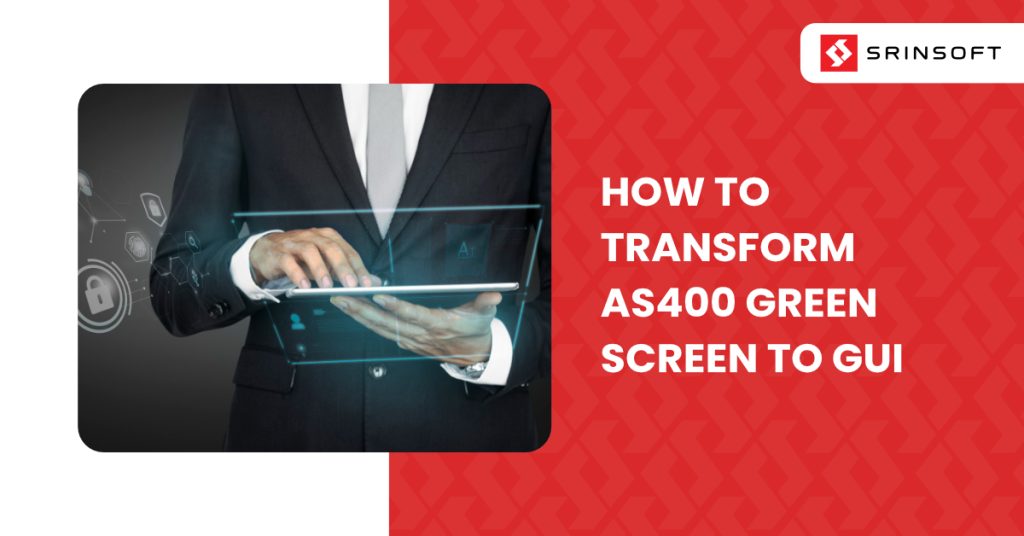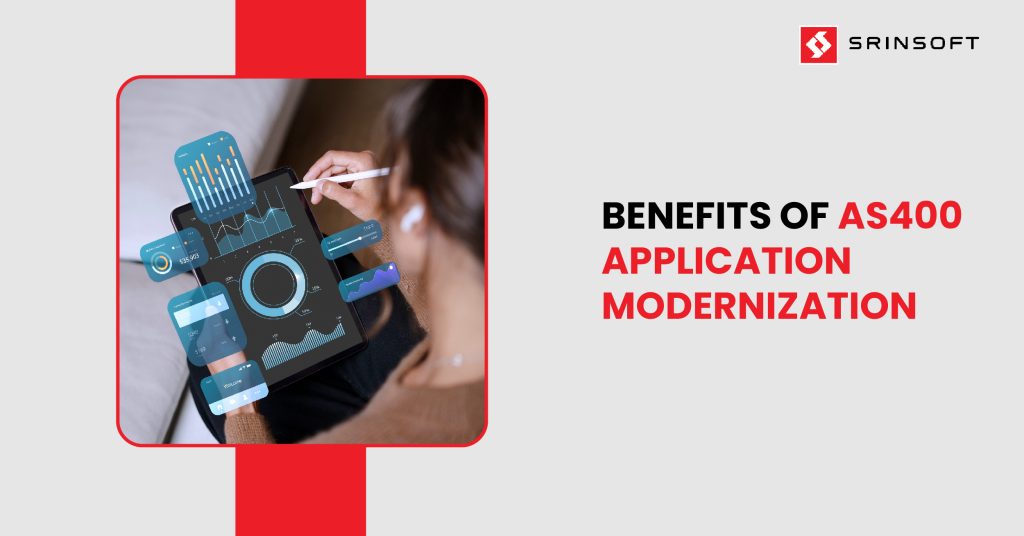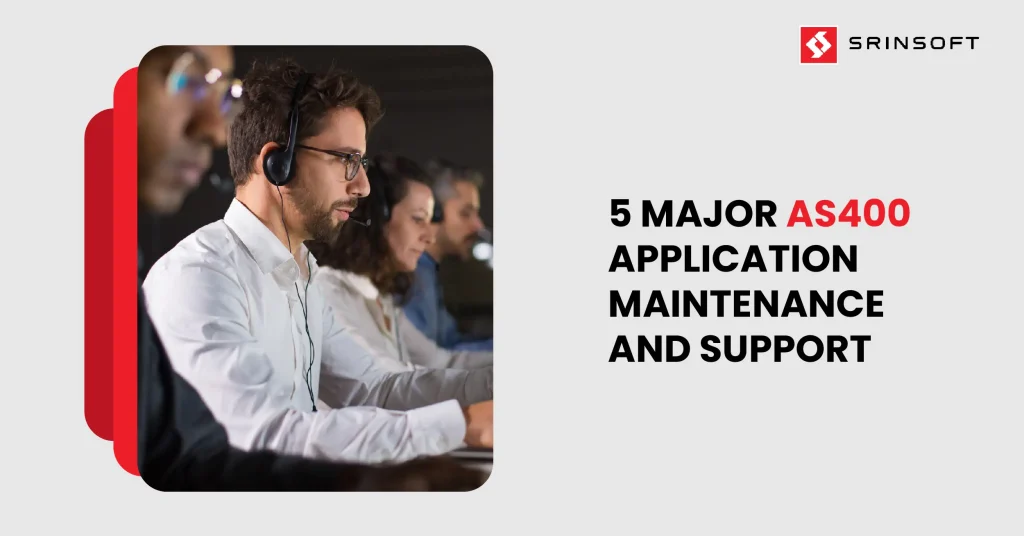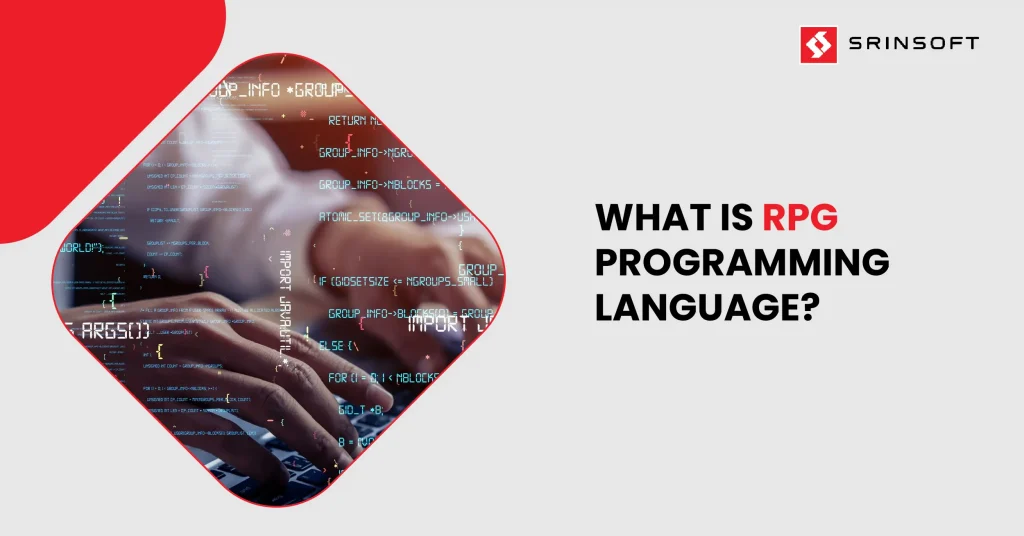
The AS400 Green Screen is a user interface that has been very popular among businesses for its desirable features like reliability, scalability, and low downtime. However, this UI has existed for several years, and companies still rely on it. It is essential to upgrade to keep up with concurrent technologies.
The AS400 system’s old-fashioned text-based interface can be difficult for modern interface users. This will affect the productivity of users and make it hard to adapt to new technology.
There are many benefits for organizations looking to modernize their AS400 systems to GUI. By switching to a Graphical User Interface (GUI), businesses can solve a lot of these problems. GUIs offer several advantages – they are easier to use, make work faster, and fit in better with other modern technology.
Updating to GUI isn’t just about making things easier now, it’s also about preparing for the future. With a GUI, companies can attract more skilled employees and make sure their systems stay up-to-date with industry standards. In this blog, we’ll talk about how to change the AS400 Green Screen to GUI. We’ll discuss the challenges, the benefits, and the things companies need to think about when they decide to make this change.
Limitations of AS400 Green Screen
AS400 Green Screen is a legacy system with many drawbacks. Following are some of the key limitations of the technology:
Reduced User Productivity
AS400 has a plain, text-based interface which not only reduces user productivity and efficiency but also slows down workflows. It lacks a user-centric and intuitive design that provides both ease of use and diverse features at the same time.
Graphical Constraints
People need charts, pictures, and graphs to make better decisions, but AS400’s text-based environment makes them hard to display. In today’s data-driven business world, this is a major limitation in AS400’s design.
Integration Challenges
AS400 is difficult to integrate with modern applications, web services, APIs, and cloud solutions. Due to this limitation of AS400, it puts organizations at a disadvantage compared to their competitors who use more interconnected systems to optimize their operations and communications.
Rigidity in AS400 Green Screen
Adding or changing features to AS400’s green screen is extremely time consuming and complex due to its rigid design. This makes it harder to respond quickly to changing business needs.
User Experience
AS/400’s text-based, monochromatic interface doesn’t have the visual appeal or easy browsing experience that current users accustomed to GUIs might expect. Additionally, the absence of visual cues and straightforward design elements further disengages users and diminishes their efficiency when working with AS400.
Scalability and Flexibility
When compared to current cloud-based designs, AS400 systems may not be as scalable or flexible. AS400 may not be able to meet the needs of organizations that want to quickly expand their infrastructure or use agile development methods.
Why AS400 Green Screen Modernization Matters?

AS400 green screen has been around for several years now and companies using them should consider upgrading to applications with modern graphical user interface (GUI). Here are some of the benefits of modernizing AS400:
Enhanced User Experience
Users are more satisfied and more productive when they make the switch from the old green screen display to a new graphical user interface (GUI), thanks to the enhanced user experience and improved functionality. GUI environment make it easier for users by having clickable buttons, easy access, and engaging features.
Increased Productivity in AS400 Green Screen Modernization
By moving to modern GUI interfaces, users can have many benefits like multitasking, real-time collaboration, and faster development cycles. Users can work simultaneously, test code, and switch between tasks easily.
Competitive Advantage
Updating AS400 systems gives organizations a competitive edge by bringing them up to date with user demands and industry standards.
Compatibility with Modern Technology
By moving to GUI-based applications, organizations will have the facility to integrate their systems with modern technology like API, cloud, and automation tools. This can boost the quality of work as well as streamline the development process.
Operational Efficiency
Modernizing the GUI makes things run more smoothly and requires less work to be done manually. With GUI, it is also possible to automate repetitive tasks and respond more quickly to changing business needs.
Risk Mitigation
End-to-end encryption and user-based access controls are some of the advanced security features that modern GUI interfaces have. These features lower the risk of security breaches and data vulnerabilities.
Cost Reduction
Updating the GUI cuts running costs because processes are more efficient and GUI applications make better use of resources when compared to the AS400 green screen. It improves ROI by making the business more productive and helps in making better decisions.
Employee Satisfaction
A more up-to-date GUI interface makes workers more satisfied by simplifying jobs and lowering the learning curve. It makes workers more interested in their jobs, which leads to better business performance.
Pathways to Modernise AS400 Green Screen
API & UI Framework
By using APIs and UI frameworks, businesses can make modern, flexible user interfaces that can interact with AS400 systems through REST APIs. This method separates the appearance layer from the application code underneath. This involves separating how the application looks (presentation) from how it works (logic), which in turn enables developers to can change how the application looks without affecting how it functions.
Instead of having a fixed design, developers can create interfaces that can be scalable and adaptable very easily. To do this, developers use popular web development frameworks like Angular, React, or Vue.js to create front-end interfaces. These tools provide pre-made parts and instructions to make building interfaces faster and easier.
By making AS400 features available through REST APIs, companies can make it easy for other systems and apps to connect and work with them. This makes it easier for data to flow between platforms.
RPG Open Access to AS400 Green Screen
RPG Open Access (OA) makes it possible to integrate current technologies with RPG codebases that are already on AS400 systems. By making use of OA, it is possible for businesses to make legacy applications more useful without having to rewrite big chunks of code.
With RPG OA, developers can also use contemporary programming methods, frameworks, and libraries and still be compatible with the current infrastructure. Through its function as a link between old RPG programs and contemporary development platforms, RPG OA allows companies to gradually update their AS400 systems.
Screen Scraping
Screen scraping is the process of taking content shown on an IBM i 5250 green screen and putting it in a more appealing manner. Instead of those old screens, it gives a new look, usually on a web browser. It doesn’t change how the old system works, instead just makes it look better on the outside.
The underlying code or functions of the current app are not changed by this method. Instead, it makes the experience better for users by giving them a new way to work with old systems. This is a quick and cheap way to bring old AS400 programs up to date because it only changes the appearance layer and doesn’t require major changes to the infrastructure underneath.
Screen Re-facing in AS400 Green Screen
Screen Re-facing gives old AS400 applications a new look by creating brand-new webpages using modern web design tools like HTML and CSS. These new web pages are hosted on a server. Unlike screen scraping, which captures and displays the original screen content, screen re-facing creates entirely new interfaces that interact with the old AS400 system’s underlying data and business logic.
With screen re-facing, there is more freedom to design the interface exactly to the business needs. Screen re-facing might take more developmental effort, but it gives users a more personalized and up-to-date experience than traditional green screens.

Conclusion
It is important for businesses to update their AS400 green screen systems to make them easier to use, boost productivity, and keep up with the competition. There are different pathways to modernization, and businesses should pick the ones that suit their needs and goals best. This could depend on things like their technology needs, available resources, and long-term plans.
By picking the right modernization strategies and investing in training, businesses can smoothly transition to modernized AS400 systems and set themselves up for success in the digital age.
Frequently Asked Questions
Is AS400 a green screen?
AS400 systems were first known for their green screen interface in which they displayed text on a monochrome screen with green letters. Over time, AS400 systems have evolved and they now support graphical user interfaces (GUIs) and web-based applications. These interfaces are more visually appealing and easier to use compared to the traditional green screen.
What are AS400 systems?
AS400 (Application System/400) is a mid-range server. IBM released it in 1988 for small, medium, and large web and mobile applications. It became popular due to the wide range of functionality it provides.
What is AS400 called now?
AS400 is now commonly referred to as IBM i or IBM Power Systems. While AS400 was the name of the system in the past, IBM rebranded it to IBM i to reflect its evolution into a more modern and integrated platform. Additionally, IBM Power Systems is the hardware platform on which IBM i operates.
What is AS400 used for?
AS400 is used for a wide range of business applications. It is known for its versatility and is commonly used for tasks such as data management, database operations, business intelligence, ERP, CRM, supply chain management, and financial management.
Is AS400 still used?
Thousands of businesses continue to use AS400 technology to run some of their critical application. These businesses include banks, manufacturing and distribution centers, retailers and even government agencies.
Why do businesses still use AS400?
The IBM AS400 system is well known for its security and is easy to implement and manage. With IBM AS400 on board, businesses can secure their records, client data, and transactions against inside and outside breaches. The technology will prevent customer data tampering and will also reduce the risk of fraud – which is the most important operational.
What code does AS400 use?
Programming languages available for the AS/400 include RPG, assembly language, C, C++, Pascal, Java, EGL, Perl, Smalltalk, COBOL, SQL, BASIC, PHP, PL/I, Python and REXX.


